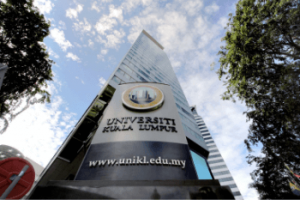Home » Aerospace
Study Aerospace Abroad!
- Duration: 4 - 7 Years
- Average fees: RM 50,000 to 90,000
- Average Salary: RM 2,000 to 3,000
- Job Demand: Low
Introduction to Aerospace
Aerospace Engineering covers the construction, design, and maintenance of aircraft and spacecraft systems. This includes flight safety, fuel system, cost of operations and environmental impact.
As one of the newest branches in engineering, Aerospace has two specialties; aeronautical engineering, which involves the maintenance and operation of aircrafts, and astronautical engineering, which deals with the design and development of spacecrafts.
Aviation companies hire technicians and engineers to conduct repairs and maintenance services on the aircraft before it is deployed for duty. Alternatively, you can also opt for the research and development side of the profession, which includes upgrading existing technology, calculating project costs and investigating air crashes.
If you’re interested to work for leading aviation companies or organizations that partake in the exploration of space, Aerospace Engineering may be the career path for you.
Branches of Aerospace Engineering
There are two main branches of aerospace engineering, Aeronautical and Astronautical. Later on, students can choose a main area to specialize in.
- Thermodynamics
- Celestial Mechanics
- Astronautics
- Avionics
- Robotics
- Structures
- Propulsion
- Stability & Control
What will you study?
In this course some of the following modules you will study are:
- Aircraft Structures
- Flight Dynamics & Control
- Flight Testing & Analytics
- Structural Mechanics
- Spacecraft Systems
- Aerodynamics
- Stability & Control
- Propulsion Systems
- Vehicle Design
What are the requirements?
A-Levels: Minimum 2 passes in the relevant subjects
STPM: Minimum 2 passes in the relevant subjects
SAM: Tertiary Entrance Rank of 70 and Grade B in 2 of the relevant subjects
UEC: Grade B in 6 of the relevant subjects
Canadian Pre-University (CPU): Average of 70% in 6 of the relevant subjects
What skills do you need?
Analytical: Aerospace engineers will need to have an analytical mindset to identify elements that are not working in a design and come up with alternatives to improve its performance.
Good at Math: When building or designing an aircraft, aerospace engineers will need to use their mathematical skills in calculus, trigonometry, and add maths to analyze and troubleshoot the problem.
Critical Thinking: In order to figure out why a particular design does not work, aerospace engineers need to think logically and know how to apply a practical approach for the best outcome.
What are the job opportunities?
Aerospace engineers can work in various sectors of the aerospace industry, such as the propulsion industry, airlines, and the major contractors of aircraft parts. These are some career paths available for aerospace engineering graduates:
Aerospace Engineers – Needed to develop innovative forms of air travel that can keep up with the rising demands for improved functionality, hold it’s own against unpredictable weather storms, and withstand the test of time.
Inspectors – Deals with the safety of people and staff on the ground by inspecting
the aircraft and enforcing a strict list of regulations to follow. They usually work for government safety departments as well as private aerospace manufacturers.
Mechanical Engineers – Involved with the design, research, and development of the tools and engines that are used in aerospace engineering.
Aside from the aerospace industry, graduates can also find employment outside the field in engineering and building, maintenance, IT, and electrical engineering.
Are you interested to study this subject in Malaysia?
Please fill up the form and our conselors will get back to you shortly.
Universities to attend:
Courses to take:
What's new

5 Easy and Affordable Recipes for Students Away from Home! – Eduloco Recipes
Looking for some easy and wallet-friendly recipes? You’re in the right place! At Eduloco, we understand the student life hustle, and that’s why we’ve curated




